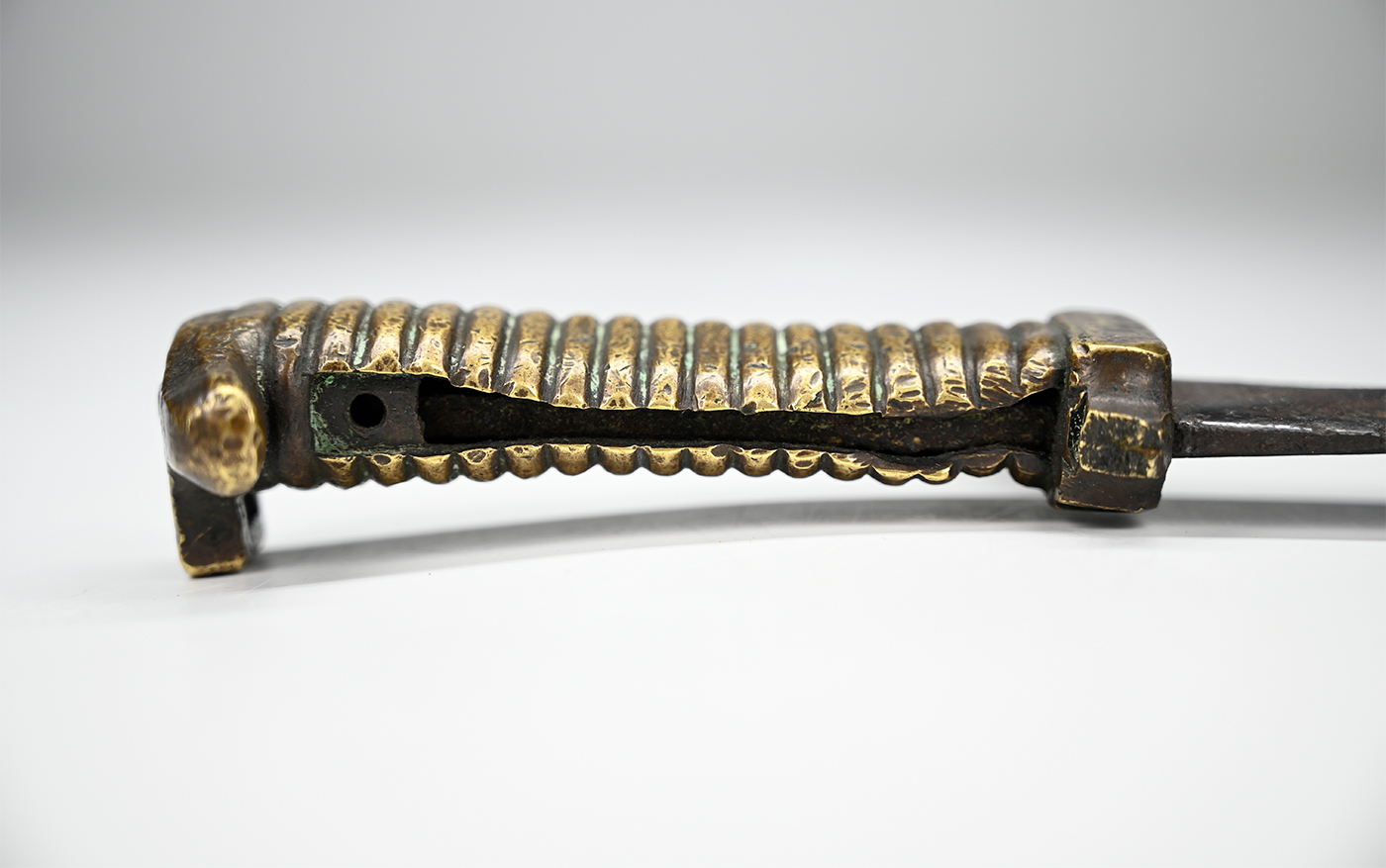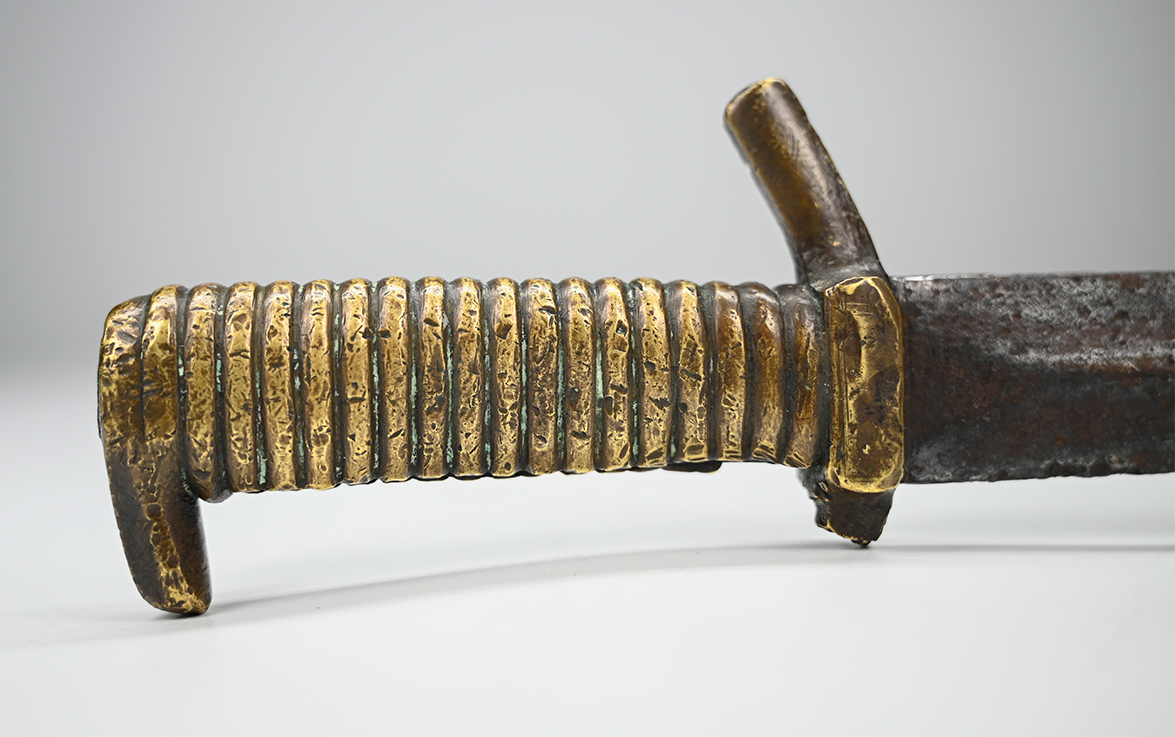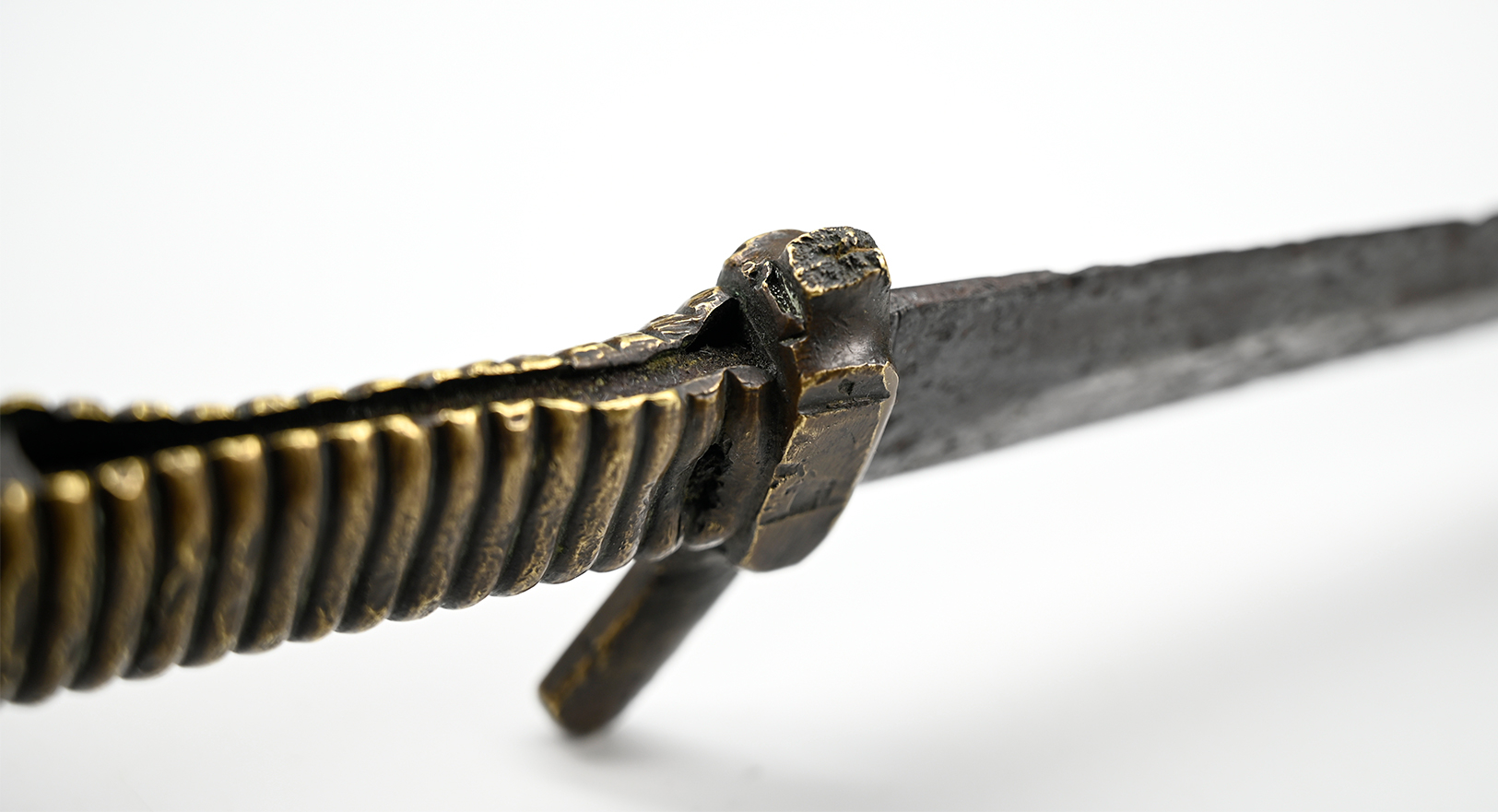site search
online catalog
VERY RARE CONFEDERATE COOK AND BROTHER SHOTGUN SABER BAYONET

Hover to zoom









$495.00 SOLD
Quantity Available: None
Item Code: 1127-03
This is in excavated condition, but a very rare survivor - the saber bayonet expressly designed for mounting on a shotgun by Cook and Brother of New Orleans in an effort to create a usable infantry arm for local forces called out to defend the city when regular troops had been sent north to join Beauregard at Corinth in early 1862. Confederate commander Mansfield Lovell later testified, “… the city was only garrisoned by about 3,000 ninety-day troops called out by the Governor at my request, of whom about 1,200 had muskets and the remainder shotguns of an indifferent description.” Among those latter troops are specifically mentioned members of Col. Ignatius Szymanski’s Chalmette Regiment, one of whose companies was sent to Fort St. Phillip, others posted to guard various bayous and creeks, and five captured en-masse at a small, fortified camp on the west bank of the Mississippi, after the USS Cayuga forced their surrender. Not all of their shotguns were apparently altered, but a Cook and Brother receipt exists for a group of twelve altered for one of the Chalmette companies and the commander of the Cayuga took at least two as souvenirs, later fitted with engraved plaques detailing their capture on April 24, 1862, from the Chalmette Regiment. The remainder of those surrendered to the Cayuga were either taken by other officers, pilfered by Union troops who subsequently took possession of the site and surrendered material, or simply dumped in the river. Those in the hands of other companies certainly met similar fates. Five such altered shotguns, double and single barrel, are currently known, three with bayonets. Bayonets on the loose cannot be much more common.
Formerly attributed to the Mobile Depot, the Cook and Brother receipt rather clinches the matter, at least as far as this specific method of attaching the bayonet, which used a brass adapter soldered to the side of the barrel carrying two long lugs that slide into two raised slots cast into the brass hilt of the bayonet, which was fitted with a long blued steel spring running along the underside of the grip that would lock it in place against a notch in the forward lug, with the end of the spring curved slightly to form a thumb release that could be pressed down to unfix the bayonet. There was a good deal of hand fitting as usual and both the bayonet and lug were stamped with mating numbers. Those surviving with the altered shotguns do not match the guns they are on, but that was likely from the souvenir hunter picking them up at random.
This measures 23-1/4 inches overall. The blade is 19-inches, straight, double-edged with prominent medial ridge and spearpoint tip. The hilt is brass, cast with a straight grip, oval in cross-section, with grooves and ridges. The cruciform guard had two short, straight quillons. The pommel was cast with a short, lower extension to give a more secure grip if used as a side-knife or short sword. The blade remains almost full length, with just slight rounding to the tip, and is largely a dark gray in color. It shows deep pitting and losses to the edges, but the overall form is clear with the prominent central ridge and triangular ricasso. The raised rear bracket with slot on the pommel is intact. The forward slot was sheared off and flattened, eliminating the mating number, with the upper quillon showing a backward bend and the lower quillon broken off. The spring is long gone. The base for the spring’s screw is evident near the pommel in the channel for it on the underside of the grip, but the sides of the grip have been compressed in the middle. All in all, it looks as if some effort was made to make it unusable as a weapon, or at least as a bayonet.
Other southern gunmakers developed bayonets for converting a shotgun into a viable infantry arm as well, but given that infantry being called up in New Orleans in early 1862 were most likely to be manning fortifications and defending gunports and embrasures in close fighting if a fort were stormed, a shotgun with bayonet, like later trench shotguns, made a good deal of sense. They would offer little satisfaction if a ship-borne enemy simply chose to stand off and batter the place into submission, but these scarce weapons are a tribute to innovation and resourcefulness in the face of pressure and shortages of every description. See Phillips article on these in North-South Trader 37.5 and Ashworth and Pritchard, "Confederate and Southern Agent Marked Shotguns" for further details on the modifications of the shotguns, creation of these bayonets, as well as information on the Cook and Brother firm, etc. [sr][ph:m]
~~~~~~~~~~~~~~~~~~~~~~~~~~~~~~~~~~~
THIS ITEM, AS WITH ALL OTHER ITEMS AVAILABLE ON OUR WEB SITE,
MAY BE PURCHASED THROUGH OUR LAYAWAY PROGRAM.
CLICK HERE FOR OUR POLICIES AND TERMS.
THANK YOU!
Inquire About VERY RARE CONFEDERATE COOK AND BROTHER SHOTGUN SABER BAYONET
Most Popular
Historical Firearms Stolen From The National Civil War Museum In Harrisburg, Pa »
Theft From Gravesite Of Gen. John Reynolds »
Selection Of Unframed Prints By Don Troiani »
Fine Condition Brass Infantry Bugle Insignia »
featured item
MINT IDENTIFIED BREVET BRIGADIER GENERAL’S FROCK COAT AND CHAPEAU OF ALONZO ALDEN
This sets consists of Brevet Brigadier General Alonzo Alden’s mint condition brigadier general’s frock coat with shoulder straps and his full dress “light French chapeau,” allowed for officers of the General Staff and Staff Corps” under the… (1179-156). Learn More »


